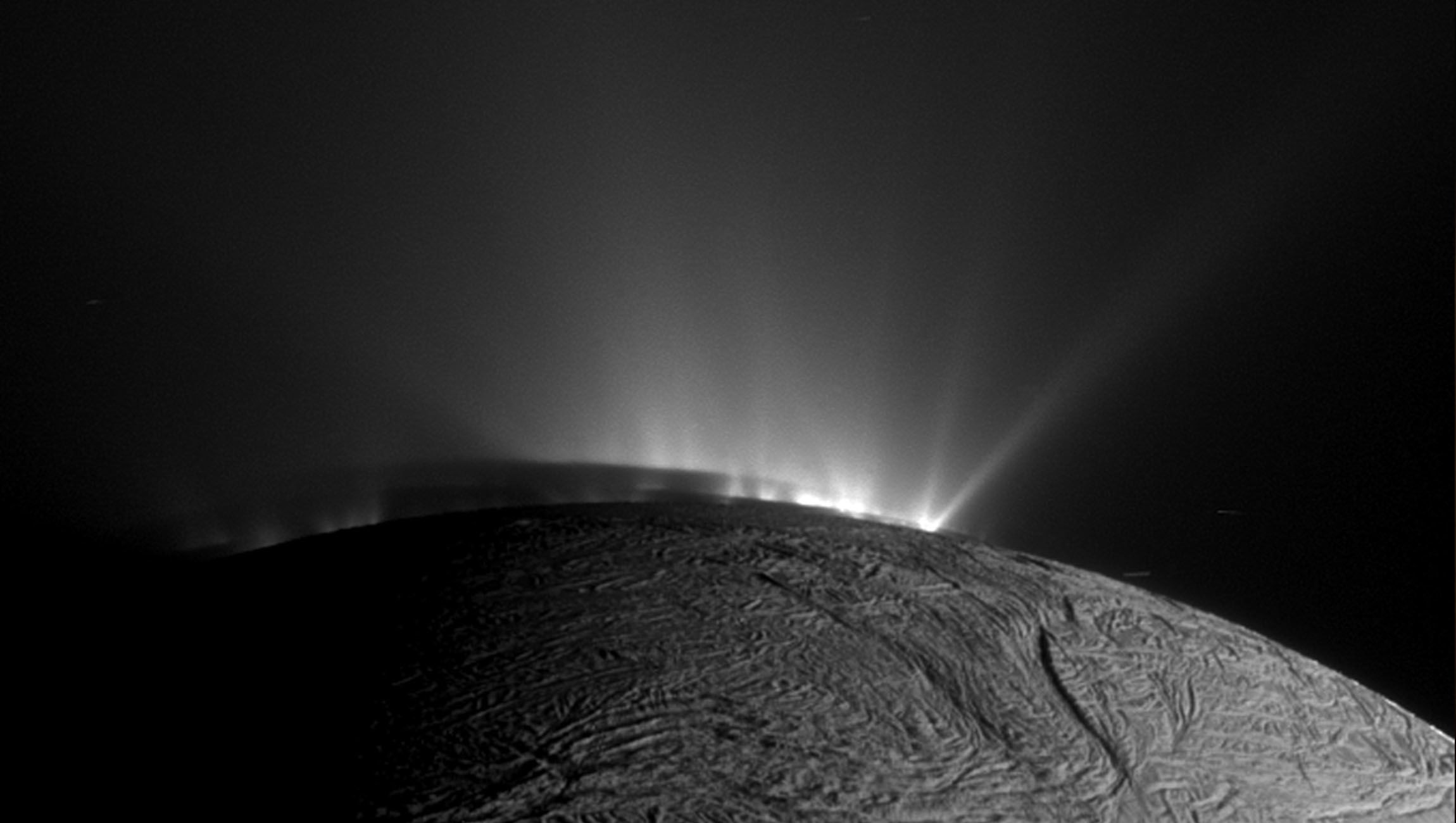Create a free profile to get unlimited access to exclusive videos, sweepstakes, and more!
Could the organic compounds found in the ice on one of Saturn's moons be proof of aliens?

Enceladus has been imagined a possible candidate for hosting extraterrestrial life since we knew the frozen orb, made of water ice, existed—but does that mean something is living in it?
There is a chance Saturn’s glacial moon might host life. Not that we even know how high that chance is (or if just the thought of it comes from watching too much Star Trek), but the new kinds of organic compounds recently discovered in the plumes of water that gush from the moon’s icy crust are the ingredients of amino acids. This is kind of a big deal because amino acids are the basic components of life on Earth. If the same goes for other moons and planets, that could be telling us something.
"We don't yet know if amino acids are needed for life beyond Earth, but finding the molecules that form amino acids is an important piece of the puzzle," said research lead Nozair Khawaja, whose team published their findings in Monthly Notices of the Royal Astronomical Society.
It was data from the Cassini mission in which Kawaja’s team found evidence of amino acids. Using Cassini’s Cosmic Dust Analyzer (CDA), they found ice grains that had been spewed from Enceladus in Saturn’s E ring. The scientists believe that the organic material first dissolved in the subsurface ocean of Enceladus that evaporated once it reached the water’s surface right below the ice. It then condensed and re-froze onto grains in the cracks of the ice before a water plume shot into space.
"This work shows that Enceladus' ocean has reactive building blocks in abundance, and it's another green light in the investigation of the habitability of Enceladus," co-author Frank Postberg explained about the study, which follows last year’s discovery of complex organic molecules that were larger and insoluble in water.
When we finally get an amphibious spacecraft to drill through the ice and dive into Enceladus, it will most likely search for the same kinds of hydrothermal vents found on our planet’s ocean floor. The hot water that bursts from these vents provides energy to fuel reactions which produce amino acids. If such vents are found on the floor of Enceladus’ ocean, the exact same thing could be going on. Or not. Only an investigation via spacecraft could tell us that for sure.
"If the conditions are right, these molecules coming from the deep ocean of Enceladus could be on the same reaction pathway as we see here on Earth," Khawaja said.
While NASA is definitely sending a lander to Titan to explore its liquid methane, Enceladus remains a contender for a future mission. Until then, you can always imagine something with three heads and eighteen tentacles swimming through those waters.
(via NASA)


























